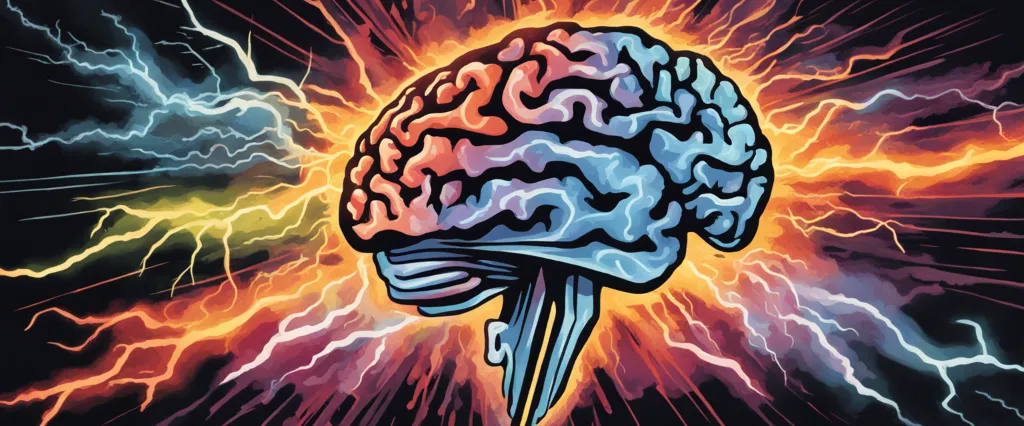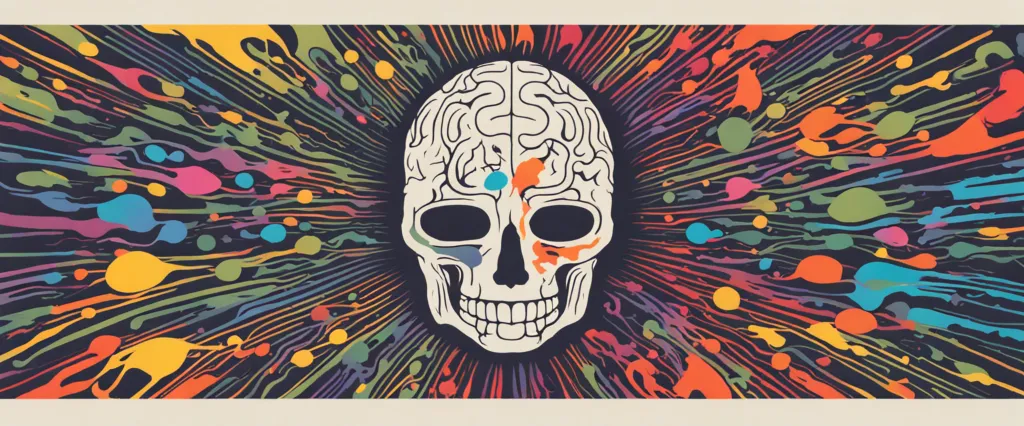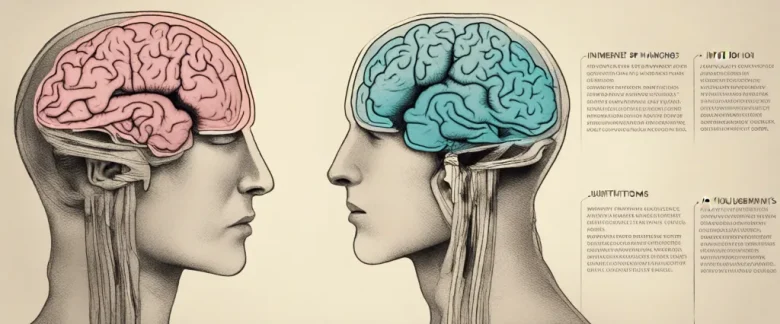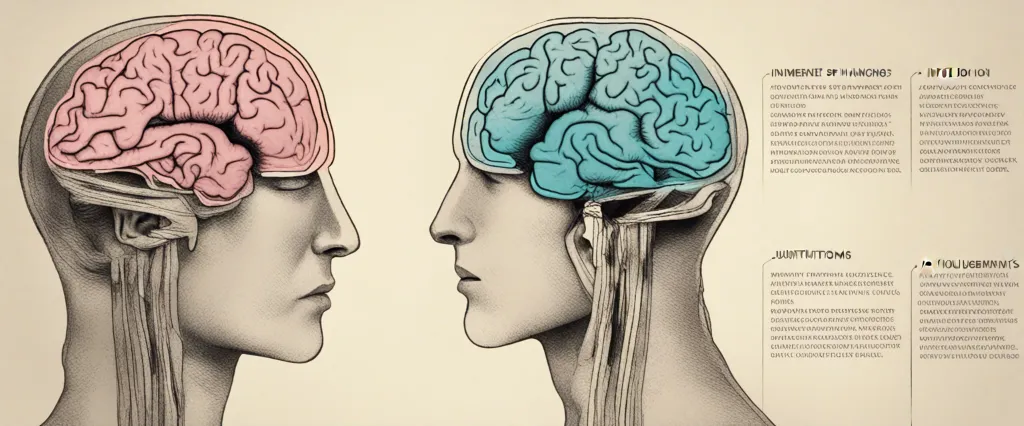In the captivating book “Phantoms in the Brain,” renowned neurologist V.S. Ramachandran expounds upon his groundbreaking research on the mysteries of the human brain. Fueled by curiosity and compassion, Ramachandran delves into the enigmatic realm of neurological disorders, exploring the peculiar cases of patients with phantom limbs and fragmented perceptions of reality. Through an eloquent blend of scientific rigor and captivating storytelling, the author uncovers the complexities of the brain and offers profound insights into the human experience. With his extensive knowledge and innovative approach, Ramachandran traverses the astonishing landscapes of the mind, unraveling the intricate tapestry that intertwines our physical existence with our perception of the world.
Chapter 1: Phantom Limbs – Exploring the mystery of sensations in missing limbs.
Chapter 1: Phantom Limbs – Exploring the mystery of sensations in missing limbs from the book “Phantoms in the Brain” by V.S. Ramachandran dives into the intriguing phenomenon of phantom limbs and the various theories surrounding this mystery.
The chapter begins with the story of a patient named John, who had his arm amputated due to an accident. Despite his arm being physically absent, John claims to feel intense sensations in his phantom limb, such as itching and cramping. Intrigued by John’s case, Ramachandran starts his exploration into the science behind phantom limbs.
Ramachandran discusses how the brain is responsible for generating the perception of limbs and how this perception can continue even after amputation. This leads to an understanding of the topographical organization of the brain’s sensory cortex, where each body part corresponds to a specific region in the brain.
Theories explaining phantom limb sensations are presented and evaluated. One theory suggests that the brain receives cross-wired signals, with the nerves originally responsible for the amputated limb now stimulating adjacent nerves. Another theory proposes that the brain’s self-image is disrupted after amputation, leading to the persistence of limb sensations.
The chapter delves into experiments conducted by Ramachandran to understand phantom limbs further. For instance, using a mirror box, he discovers that by tricking the brain into perceiving movement in the phantom limb, patients can alleviate their pain. This discovery highlights the brain’s plasticity and its ability to reorganize itself.
Overall, Chapter 1 explores the enigma of phantom limbs and how Ramachandran’s research brings us closer to unraveling the neurological basis for these sensations in missing limbs.
Chapter 2: Brain Plasticity – Discussing the brain’s adaptability and reorganization.
In Chapter 2 of “Phantoms in the Brain,” titled “Brain Plasticity: Discussing the brain’s adaptability and reorganization,” V.S. Ramachandran delves into the remarkable phenomenon of neuroplasticity. He explores how the brain is capable of adapting and reorganizing itself in response to various internal and external factors.
Ramachandran begins by discussing the groundbreaking research of Michael Merzenich, which revolutionized our understanding of brain plasticity. Merzenich’s studies showed that the adult brain, previously considered unchangeable, actually possesses the remarkable ability to rewire itself in response to experience and injury.
The chapter then explores various intriguing cases that exemplify brain plasticity. For instance, Ramachandran describes the case of Graham, a patient suffering from phantom limb pain. Through the use of a mirror box, Graham is able to alleviate his pain by tricking his brain into perceiving the missing limb as still being present. This case highlights the brain’s ability to reorganize its sensory maps and adapt to novel situations.
The author also discusses the phenomenon of cortical remapping, where brain areas responsible for specific functions can change due to injury or training. Through compelling examples, such as the case of Braille readers, whose somatosensory cortex expands to accommodate the increased input from their fingertips, Ramachandran illustrates the brain’s adaptability.
Moreover, the chapter explores the concept of synesthesia, a condition where the senses become cross-wired, leading individuals to perceive one stimulus as another. Ramachandran explains how synesthesia provides further evidence of brain plasticity, as it suggests that the brain is capable of creating new connections between different areas responsible for sensory processing.
In conclusion, Chapter 2 of “Phantoms in the Brain” delves into the concept of brain plasticity, presenting compelling cases that demonstrate the brain’s extraordinary ability to adapt and reorganize itself. Ramachandran’s exploration of neuroplasticity challenges prior notions of the brain’s fixedness, opening up new possibilities for rehabilitation and understanding the complexity of human perception and cognition.
Chapter 3: Sensory Maps – Examining how the brain maps sensory information.
Chapter 3 of “Phantoms in the Brain” by V.S. Ramachandran delves into the intriguing world of sensory maps and how the brain processes sensory information. Ramachandran starts by introducing the concept of the homunculus, a distorted representation of the human body in the brain. He emphasizes that the homunculus is not an anatomically accurate portrayal but rather a representation of the body parts based on their perceived importance and richness of sensory input.
The author then explores the somatosensory homunculus, a map of the body’s surface created by sensory inputs from different body parts. Ramachandran explains how the homunculus is not static, but rather dynamic and adaptable. He delves into the phenomenon of sensory remapping, where the brain can alter the arrangement of body parts in the somatosensory homunculus based on changes in sensory input or amputation.
Ramachandran also discusses synesthesia, a condition where the brain mixes up sensory experiences, such as perceiving numbers as colors or associating certain sounds with specific tastes. He provides various case studies and experiments to demonstrate how synesthesia can be tested and understood.
Furthermore, the author introduces the idea of phantom limbs, which are sensations experienced by amputees in their missing limbs. He explores the complex neural mechanisms behind this phenomenon and describes his experiments with mirror visual feedback therapy to alleviate phantom limb pain.
In summary, Chapter 3 of “Phantoms in the Brain” explores sensory maps and their plasticity in the brain. Ramachandran covers topics such as the somatosensory homunculus, sensory remapping, synesthesia, and phantom limbs, providing insight into the intricate and fascinating workings of the brain’s organization and perception of sensory information.
Chapter 4: Synesthesia – Exploring the blending of senses.

Chapter 4 of “Phantoms in the Brain” by V.S. Ramachandran delves into the fascinating phenomenon of synesthesia, which involves the blending of one’s senses. Ramachandran aims to explore the causes, experiences, and possible explanations of synesthesia.
Synesthesia is a condition where sensory experiences become mixed or confused, resulting in individuals perceiving stimuli in unconventional ways. For example, a person with synesthesia may associate certain colors with specific numbers or letters, where each has a distinct hue. Ramachandran provides various intriguing examples of synesthetic experiences, such as people seeing colors when listening to music or tasting certain flavors based on shapes.
The chapter delves into the possible causes of synesthesia, suggesting that it may arise from unusual connections between adjacent brain regions, particularly the ones responsible for processing different senses. Ramachandran discusses a study where individuals without synesthesia were trained to associate colors with letters, leading to increased brain activity in regions associated with color perception. This suggests that the synesthetic experience may occur due to the existence of enhanced neural connections that allow information to cross between the respective regions.
While there are debates among scientists about the exact mechanisms behind synesthesia, Ramachandran offers his own ide
Chapter 5: Capgras Syndrome – Investigating the belief that loved ones are impostors.
Chapter 5 of “Phantoms in the Brain” by V.S. Ramachandran explores Capgras syndrome, a rare neurological disorder in which individuals believe that their loved ones have been replaced by impostors. Ramachandran begins by discussing a case study of a woman called Jean, who suffers from this condition. Jean claims that her husband has been replaced by an identical-looking imposter, even though her perception of him remains intact.
Ramachandran suggests that Capgras syndrome is a result of a disconnect between the regions of the brain responsible for recognizing faces (i.e., the fusiform face area) and the emotional centers in the limbic system. In a healthy individual, these areas work in harmony, allowing the person to recognize faces and attach emotional significance to them. However, in Capgras syndrome, this connection is disrupted, leading to the feeling of familiarity without the accompanying emotional response.
To investigate this disorder further, Ramachandran and his team conducted an experiment using photographs of faces. They found that patients with Capgras syndrome exhibited reduced skin conductance responses (indicating reduced emotional arousal) when shown pictures of their loved ones, but not when shown pictures of strangers. This supports the theory that the emotional disconnect is specific to familiar individuals.
Ramachandran also explores potential causes of Capgras syndrome, including brain injuries, degenerative disorders, or dysfunction of connections between brain regions. He suggests that a lack of activation in the amygdala, a key structure in processing emotions, could contribute to this condition.
In conclusion, Ramachandran’s investigation into Capgras syndrome reveals that this disorder is a result of a dissociation between facial recognition and emotional centers in the brain. By studying patients like Jean, scientists hope to gain further insights into the brain mechanisms underlying perception and emotion.
Chapter 6: Mirror Neurons – Discussing empathy and understanding others.
Chapter 6 of “Phantoms in the Brain” explores the concept of mirror neurons and their role in empathy and understanding others. V.S. Ramachandran begins by describing mirror neurons as a type of brain cell that fire not only when we perform an action, but also when we observe someone else performing the same action. This ability to mirror the experiences of others plays a crucial role in our understanding of their intentions, emotions, and actions.
Mirror neurons enable us to imitate the actions of others, which is vital for social learning and communication. They allow us to learn from observation, imitate gestures and facial expressions, and understand the intentions behind another person’s actions. This mechanism is essential for us to empathize with others and comprehend their mental states.
Ramachandran discusses various experiments that provide evidence for the existence and function of mirror neurons. For instance, studies on macaque monkeys have shown that certain mirror neurons fire when the monkeys grasp an object and when they observe someone else performing the same action. Similarly, brain imaging studies on humans have shown activation in mirror neuron areas when they observe and imitate facial expressions.
Furthermore, the author explores the implications of mirror neurons for disorders such as autism and phantom limb pain. Individuals with autism often struggle with empathy and understanding others, which may be linked to a malfunction or deficit in their mirror neuron system. In the case of phantom limb pain, mirror therapy can be used to alleviate the pain by tricking the brain into believing that the missing limb has been restored.
In summary, Chapter 6 of “Phantoms in the Brain” delves into the intriguing world of mirror neurons, revealing their significance in empathy, imitation, and understanding others. Through their functioning, we are able to bridge the gap between ourselves and others, leading to social learning, communication, and ultimately, our ability to connect with and comprehend those around us.
Chapter 7: Phantom Pain – Examining causes and treatments for phantom limb pain.
Chapter 7 of “Phantoms in the Brain” by V.S. Ramachandran, titled “Phantom Pain – Examining Causes and Treatments for Phantom Limb Pain,” explores the mysterious phenomenon of phantom limb pain experienced by amputees.
Ramachandran delves into case studies and his own research to investigate the causes of this perplexing condition. He begins by emphasizing that the brain remains fully functional after an amputation, with the sensory pathways that once connected to the limb now inactive. However, the brain still expects inputs from the missing limb, leading to the sensation of pain or discomfort.
One theory proposed by Ramachandran suggests that the reorganization of the brain’s somatosensory cortex, which occurs after amputation, could be responsible for phantom limb pain. This cortical remapping might lead to the brain misinterpreting neighboring regions as signals being received from the missing limb, triggering pain sensations.
The author also explores the role of mirror neurons in phantom pain. These neurons can fire both when performing an action and when observing someone else perform the same action. Ramachandran proposes that when an amputee observes their intact limb in a mirror placed strategically to create an illusion of the missing limb, it can help alleviate the pain. This technique, known as mirror therapy, tricks the brain into perceiving the missing limb as still intact and functioning correctly.
Furthermore, the chapter delves into additional treatments such as the use of tactile stimulation or transcutaneous electrical nerve stimulation (TENS) to alleviate phantom pain. Ramachandran describes compelling case studies where these methods have provided considerable relief.
In summary, Chapter 7 of “Phantoms in the Brain” explores the causes and treatments for phantom limb pain. It delves into the concept of cortical remapping and how the brain misinterprets neighboring regions as signals from the missing limb, leading to pain. The author also highlights the effectiveness of mirror therapy, tactile stimulation, and TENS in providing relief for amputees experiencing phantom pain. Through his research and case studies, Ramachandran sheds light on this intriguing and often debilitating sensation.

Chapter 8: Perception Disorders – Highlighting disorders affecting awareness and perception.
Chapter 8 of “Phantoms in the Brain” written by V.S. Ramachandran focuses on perception disorders and their impact on awareness. This chapter delves into various intriguing cases that illustrate how our perception can be altered or disrupted due to neurological disorders.
Ramachandran first explores a condition called anosognosia, in which patients fail to recognize their own disabilities. He presents the case of a stroke patient named Mr. D who was paralyzed on one side of his body but adamantly denied his paralysis. Through a series of experiments, Ramachandran unravels the underlying mechanism behind anosognosia, suggesting that it stems from a disconnect between the paralyzed side of the body and the brain’s awareness of it.
Moving on, the author explores neglect syndrome, a disorder where individuals fail to acknowledge or attend to one side of their visual field. He introduces the case of patient S.B., who completely neglected the left side of her world, even refusing to eat food on the left side of her plate. By manipulating a mirror reflection, Ramachandran successfully tricks S.B.’s brain into perceiving her neglected left side, providing insights into the complex interactions between the brain and perception.
Ramachandran further discusses body image disorders, focusing on phantom limb syndrome. Through various examples, he explains how amputees continue to feel sensations in their missing limbs, leading to the phenomenon of phantom limbs. The author presents his mirror box therapy technique, where a mirror is used to visually trick the brain and alleviate phantom limb pain.
Lastly, the chapter explores Capgras syndrome, a rare disorder where patients believe that their loved ones have been replaced by identical imposters. Ramachandran offers a possible explanation for this disorder, suggesting a disconnection between the emotional centers of the brain and the visual recognition areas.
In summary, Chapter 8 of “Phantoms in the Brain” examines perception disorders that disrupt awareness, such as anosognosia, neglect syndrome, phantom limb syndrome, and Capgras syndrome. Through several intriguing cases, Ramachandran sheds light on the underlying mechanisms and proposes innovative therapeutic approaches to these disorders.
After Reading
In conclusion, “Phantoms in the Brain” by V.S. Ramachandran explores the fascinating field of neurology through the lens of phantom limb experiences and other intriguing neurological phenomena. Ramachandran’s work sheds light on the mysterious workings of the brain and offers new perspectives on the nature of perception, consciousness, and identity. Through his compassionate approach to patient care and rigorous scientific inquiry, Ramachandran encourages us to rethink our understanding of the human brain and its remarkable ability to adapt and heal. This thought-provoking book challenges traditional notions and leaves the reader with a greater appreciation for the complexities of the mind and the endless possibilities for scientific exploration.
1. “The Tell-Tale Brain: A Neuroscientist’s Quest for What Makes Us Human” by V.S. Ramachandran – In this book, Ramachandran explores the intricacies of the human brain, delving into topics such as neurology, consciousness, and perception. He presents fascinating case studies and experiments to shed light on how our brains shape our experiences.
2. The Brain That Changes Itself: Stories of Personal Triumph from the Frontiers of Brain Science” by Norman Doidge – Doidge examines the notion of neuroplasticity and its implications for our understanding of the brain’s capacity to adapt, heal, and change. Through various stories and studies, he demonstrates how the concept of neuroplasticity offers hope and potential for individuals with neurological disorders.
3. “The Man Who Mistook His Wife for a Hat” by Oliver Sacks – This classic work by renowned neurologist Oliver Sacks delves into a series of intriguing case studies of patients with unique neurological conditions. Through these stories, Sacks provides insights into the complexities of the brain and the impact of neurological disorders on human experiences.
4. “Phantoms in the Wires: My Adventures in the Dark World of Hackers, Phreaks, and Spies” by Kevin Mitnick – While not directly related to neuroscience, Mitnick’s memoir offers a unique exploration of how the human brain interacts with technology. Mitnick, a former hacker turned security consultant, shares captivating stories of his experiences in the world of computer hacking, shedding light on the vulnerabilities of our digital lives.
5. Incognito: The Secret Lives of the Brain” by David Eagleman – Eagleman examines the mysteries of the unconscious mind and its influence on our behavior, choices, and perception of reality. Drawing on neuroscience, psychology, and philosophy, he explores how our brain shapes our lives without our conscious awareness, providing a thought-provoking and enlightening journey into the hidden depths of the mind.




